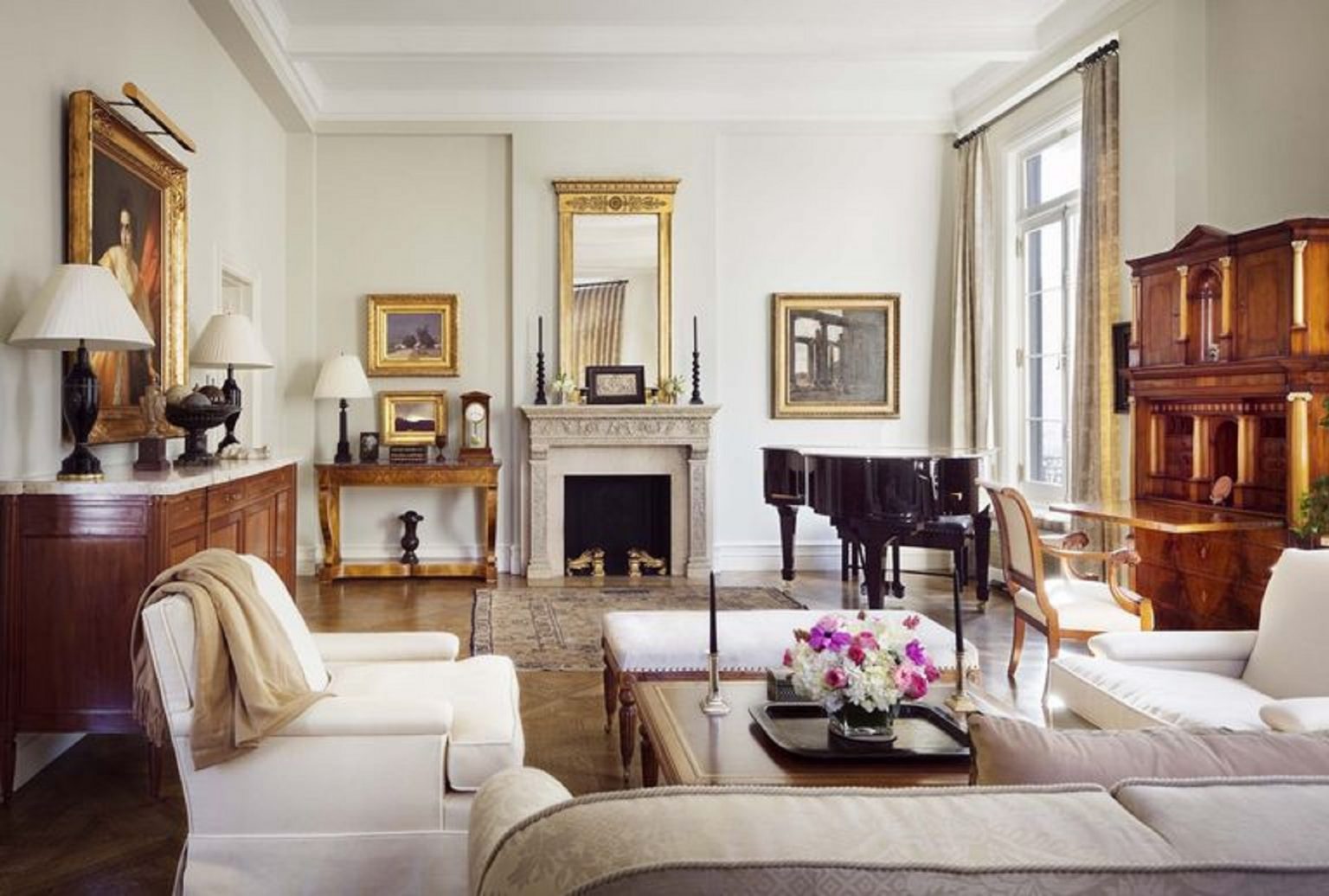
You know when you see something that just looks right, but you can’t put your finger on why? Chances are it has to do with its scale—and more often than not proportions influenced by classical architecture, says Alexa Hampton, who built a foundational knowledge of such buildings while traveling with her father, the legendary American decorator Mark Hampton. But this concept isn’t just something from the history books: It’s built around function.
“If you dig back into why things are the way they are, it’s all about the sizing of people,” explains Hampton. For example: “The reason why I like sconces at five foot six off the ground, is because that is generally where eyeballs are,” she says.
The general consistency in human size has resulted in a sort of template for design that has existed across generations and continents. Many of the lessons of proportion Hampton cites date back to classical antiquity. Understanding classical decor is a lot like the idea that modern dancers must first learn ballet—it’s about grasping the foundations of any art form, which empowers you to employ them in new combinations. “As Julie Andrews said, once you know the notes to sing, you can sing anything,” Hampton says.
So how to learn those notes? Well, “the easiest education you can get in design is to look at classical architecture,” Hampton urges. “Look at Buckingham Palace or Gothic architecture or Russian palaces. The more you look, the more you’ll understand it.”
To go along with these observations, Hampton offers some notes. Think of this as your study guide, and once you read it, go back and look at some of your favorite buildings and spaces—it just may make you see them in a whole new light.
1. Keep scale consistent
As Hampton said, it’s all based on the human form—a template that won’t change, whether you’re in a grand estate or a modest apartment. And it’s worth keeping that in mind when you decorate: “I don’t actually believe that furniture should scale up if your room is bigger—I think that’s ridiculous,” Hampton says. “It should all be scaled to the human body.”
“Sometimes people get these huge homes and they think they have to scale up,” says the designer. “They put the pictures too high and the furniture far apart, and it just looks off.”
Instead of scaling up for a larger space, Hampton suggests creating multiple groupings of human-scaled furniture within it.
2. Keep practicality in mind
Of course, sizing based off of humans is inherently logical. “There’s always a vein of practicality running through the whole process,” says Hampton of her interior design work. This concept is a good one to fall back on when you’re feeling unsure. What height should your countertops be? Probably just above your waist, so you can easily work at them while standing. How big should a rug in your bedroom be? Wide enough for you to set your feet down on it when climbing out of bed. Where should you hang a painting? Roughly at eye level so you can see it. Once you begin approaching design in these terms, you realize its “rules” are less strict barriers and more sensible suggestions.
3. Add variety
“One of the central ways I think to be more fluid about proportion is to have pieces of many different proportions in a room,” Hampton says. “If you have all furniture of the same size, there’s no rhythm, there’s no balance movement, it’s very static.”
But still, she advises, the central barometer should be—you guessed it—the human form. “Once you establish that framework, you can go above and below, or that through line, go up and below it,” she says. “But it all is tethered to that line.”
That line, in fact, is what connects pieces of smaller and larger scales. Speaking by phone from a room her father decorated, Hampton says, “This room has a really large sofa, and then these tiny slipper chairs. And if I were to just show these chairs and this sofa to a client, they would think I was crazy. But it’s not in a vacuum: It has pieces of other sizes connecting them. And those together make it scaled both to the room and to the human body.”
4. Think in 3D
Not only do you want proportional variation in your furniture, you want it in your layout. In a large room, break the footprint into sections with rugs of varying sizes. “Oftentimes you want a really big rug to amplify and to connect the spaces,” Hampton says. “But then you might put a smaller rug under the coffee table and part of the sofa, to punctuate that space as a destination of its own.”
5. Consider flow
This will also direct the flow of a room: “You need to think of traffic patterns,” says Hampton. “There needs to be a path from the opening into the room to the door going outside.” These pathways can be dictated both by furniture placement and rug outlines. “For example, you can’t have the edge of a rug be your path,” Hampton says. “Your path is either covered by rug, or it’s not covered by rug.” If you are decorating a room that connects two other rooms, serving as a kind of transitional space, make sure there is a clear path from one door to the other.
6. Keep learning
As Hampton says, the more you look at your surroundings (or books and magazines featuring great interiors), the better you’ll come to understand what works—and what doesn’t. The designer recalls one instance as a teenager that confirmed the importance of education by seeing.
“Right after I graduated from college, my father was supposed to go on this trip to Italy with the American Academy in Rome,” she recalls. “And at the last minute, he couldn’t—so my mother and I went. I was totally thrilled.” Their companions on the trip were a group of top architects, designers, and artists.
“One day, I found myself standing next to Michael Graves, and we were on this hillside overlooking a building,” Hampton recalls. “And he said to me, ‘Can you tell me what’s wrong with that house?’ What a question to be asked by a genius in his field,” Hampton says. “I was terrified.”
“My mind was racing, and I finally said, ‘there are four windows on that side and there should be five,'” she recalls. Graves nodded “and I ran away as fast as I could,” laughs Hampton.
“I’ve thought a lot about this story over the years. And at the end of the day I think it wasn’t luck—it was just, if you look enough and see enough, eventually, you can tell if something’s off.”
Credit: housebeautiful





